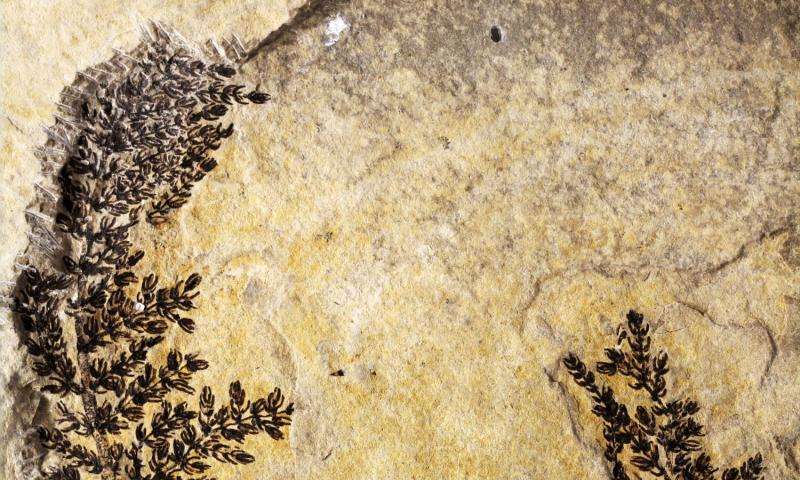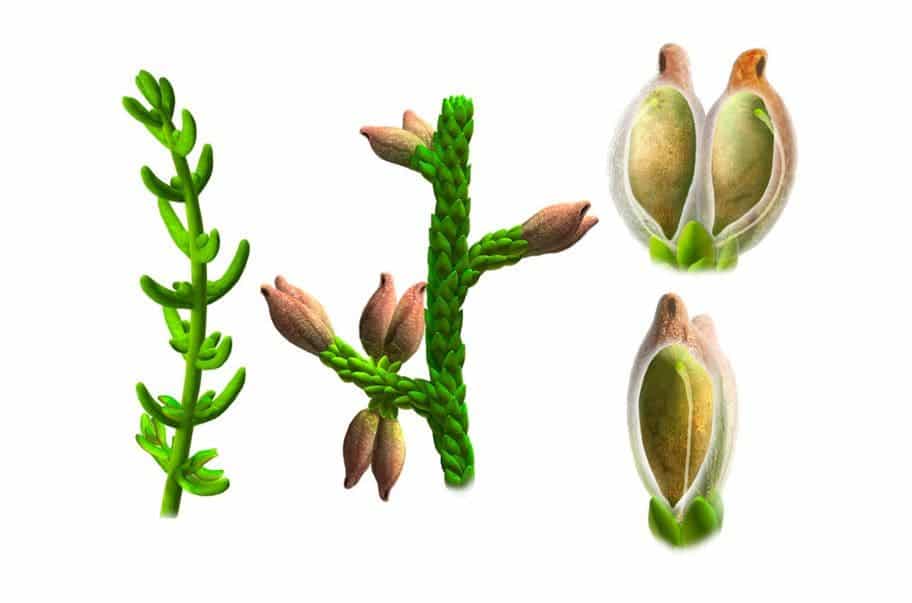
A large intact specimen of the fossil, Montsechia. Usually only small fragmentary pieces of the fossil are found. Credit: David Dilcher
We tend to think of flowering plants and ubiquitous, but in truth, they’ve “only” been around for about 125 million years – which geologically speaking… is still a lot, it’s just not forever. Geologists may have just found the oldest flower.
Looking through some previously discovered fossils, scientists were thrilled to find a spectacular specimen: a fossil of a flowering plant resembling that of the common pond weed Ceratophyllum, more commonly known as hornwort. The flowers aren’t colored, but instead, featured fine fibers. The fossil was found 100 years ago in limestone deposits from the Iberian Range in central Spain and in the Montsec Range of the Pyrenees, near the country’s border with France. However, it wasn’t properly analyzed until recently.
Interestingly enough, Montsechia vidalii, once grew abundantly in freshwater lakes, not on land.
“This discovery raises significant questions about the early evolutionary history of flowering plants, as well as the role of these plants in the evolution of other plant and animal life,” said David Dilcher, paleobotanist at Indiana University.

Illustrations based on fossilized remains show long- and short-leaved forms of the plant and a single seed. Credit: Oscar Sanisidro
Previously, Archaefructus sinensis, an aquatic plant found in China, was previously proposed as one of the earliest flowers. It’s interesting to note that now, the two oldest known flowering plants were waterborne – although the ‘first flower’ is rather a misnomer.
“A ‘first flower’ is technically a myth, like the ‘first human,’” said Dilcher. “But based on this new analysis, we know now that Montsechia is contemporaneous, if not more ancient, than Archaefructus,” he said.
Although it does’t contain any obvious flower parts, the plant is classified as a flower due to the fact that the fruit contains a single seed – the defining characteristic of an angiosperm, a flowering plant.
“Montsechia possesses no obvious ‘flower parts,’ such as petals or nectar-producing structures for attracting insects, and lives out its entire life cycle under water,” Dilcher said. “The fruit contains a single seed” – the defining characteristic of an angiosperm – “which is borne upside down,” he said.
Journal reference: Proceedings of the National Academy of Sciences









